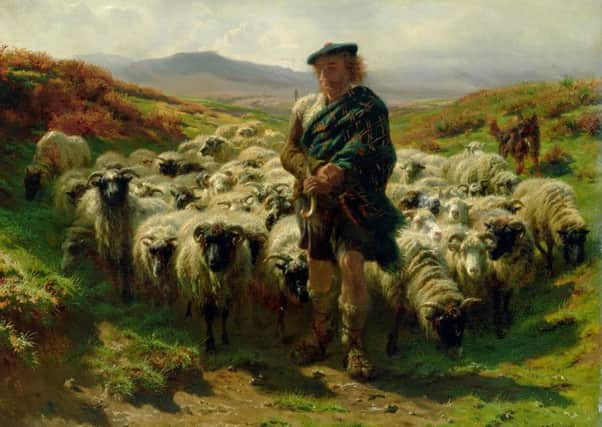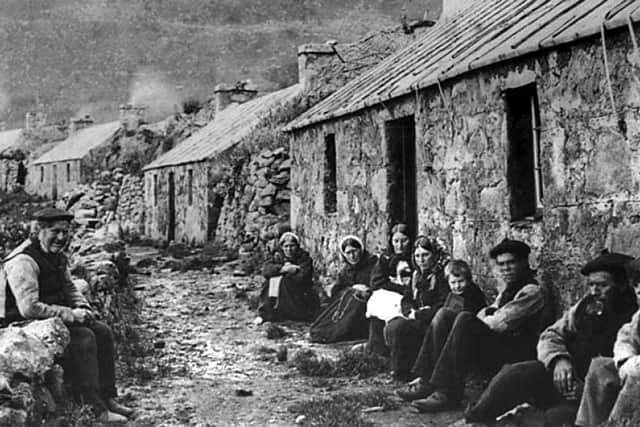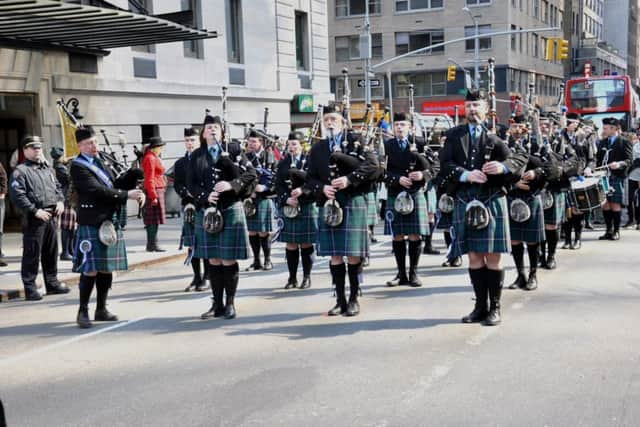The Highlander immigrants who helped build America


The breakdown of Highland society and culture created bleak prospects on home soil for ordinary folk while the revered fighting powers of the clans made their men sought after recruits for the British Army fighting the American Revolution.
A full version of the above map, designed my Mike McMillen of McMillen Design, is available here.
Advertisement
Hide AdAdvertisement
Hide AdFrom Georgia to North Carolina and New York, here we look at those from the North of Scotland who were tempted across the Atlantic - whether through desperate need or the dream of a better life.


THE FIRST ARRIVALS
Wanted: Industrious, laborious and brave Gaelic speaking Highlanders to populate the newly established colony of Georgia.
It was 1735 with two Scots, Lieutenant Hugh Mackay and Captain George Dunbar, issuing the rallying call after being hired by Georgia’s trustees to find men suitable to defend frontiers against Spain and France and to make their 20-acre lands productive.
The Highlands, whose men had been both feared and lauded for their strength and fighting power, was a natural hunting ground for the soldiers.


The Provost of Inverness, John Hossack - also a merchant and trader - was to help fund the boats to transport the men with Mackay launching a successful recruitment campaign in his home patch of Caithness and Sutherland. Dunbar successfully recruited from Clan Chattan.
Professor Marjory Harper, author and historian, said 260 men sailed to North America in three contingents between 1735 and 1741 with the first lot setting up the township of Darien on the Altamaha River - named possibly in defiance of the failed Panama scheme.
Professor Harper said; “The Highlanders did pretty well there and the trustees were pleased with what they did. A second contingent went in 1737 and a third in 1741.


Advertisement
Hide AdAdvertisement
Hide Ad“This all helped to publicise opportunity in this magical new land across the Atlantic.”
CAPE FEAR - OR THE ARGYLL COLONY
Cape Fear in North Carolina become home to around 1,200 Jacobite prisoners following the 1715 and 1745 uprisings.
The fighters were the bedrock of this new community later to be known as the Argyll Colony, which attracted an estimated 20,000 Scots in the eight years before the American Revolution.


Around 350 Scots arrived in 1739 on board The Thistle and, according to the Journal of the North Carolina Scottish Heritage Society, a second and larger wave of migration began to flood the Cape Fear valley with people from Arran, Jura, Islay and Gigha.
Professor Harper said: “At the time, Argyllshire was at the vanguard of commercialisation of estates. People were feeling dislocated at home, rents were going up, they were being treated in a far more hard nosed way by estate owners. That paternalism had gone.”
Perhaps the most famous Scot to settle in North Carolina was Flora MacDonald, the woman who aided Bonnie Prince Charlie in his departure from Scotland. MacDonald and her husband Allan arrived in 1774 having lost 300 head of cattle in the three years before their departure.
Her husband would go on to fight for the British Army in the American Revolution.
A BLURRED LINE
Advertisement
Hide AdAdvertisement
Hide AdProfessor Harper said there was often an “ambiguity” between military and civilian recruitment of Highlanders at a time when the British Government sought loyalists to fight the Revolution.
Tacksmen, the lynch pins of the old clan systems and chief organisers of men for war, became key figures in the British Army in mid-18th Century as the military role of the clans was banished by the British Government following Culloden.
Harper said: “Many of them responded to the loss of status by entering the British Army as officers.
“This was one of the ironies or the repercussions of Jacobitism. From the mid 18th Century, the feared warlike Highland clans became a major pillar in support for the British Army.
“Many of them were placed to lead imperial units and part of their reward for military service was grants of land. The tacksmen were well placed to get their tenants from back home.
“Military officers returned home to recruit settlers for their land grants, leading to the creation of concentrated clusters of Highland landownershp for strategic parts of Great British North America.
“They could basically reconstruct the clan system on the other side of the Atlantic.”
Advertisement
Hide AdAdvertisement
Hide AdThe British Government was therefore seen as an agent of Highland emigration but later became concerned that the new Highland recruits would switch allegiances on arrival in North America.
Greater scrutiny of those leaving Scottish shores was therefore required.
THE REGISTER
A nationwide effort to survey every emigrant who officially left Scotland and England for North America between December 1773 and March 1776 was undertaken.
Harper said that government disquiet at emigration was at its peak in Scotland, with tradesmen threatening to leave if they did not get higher wages and claims that people willingly committed crimes in the hope of transportation.
The Register of Emigrants shows that 3,872 people left Scotland in the period with clusters from Perth, Inverness followed by Ross and Cromarty, Arygll and Renfrew.
Most of the Highlanders were agriculturalists, Harper, chair of history at Aberdeen University, said.
She added: “The Register contains almost twice as many negative as positive statements among the Scots, particularly among emigrants from the Highlands and Islands and the western lowlands.”
Advertisement
Hide AdAdvertisement
Hide AdHowever, two out of five Scottish emigrants whose motives were recorded spoke positively about their decision to leave - particularly if they came from higher up the social scale,
Scots settled mainly in North Carolina and New York, according to the Register. Around nine percent of those who went to New York were listed as indentured servants, with the rate falling to one per cent for those heading to North Carolina, where linking up families was the main reason for going.
The Register - analysed by historian Viola Cameron - also shows 106 passengers travelled from Stornoway to Philapdelphia in May 1774 all of whom emigrated “in order to procure a living abroad, as they were quite destitute of bread at home.”
A group from Strathspey reported being driven out by “high rents and deerness (sic) of provisions.”
Another set from Argyllshire told researchers “they would never have thought of leaving their native country, could they have supplied their families in it.
“But such of them as were farmers were obliged to quit their lands either on account of the advanced rent or to make room for shepherds.”
The British Government was so alarmed that it banned emigration to North America for the duration of the American Revolution, which ended 1783.
Advertisement
Hide AdAdvertisement
Hide AdAfter the ban was lifted, US remained a key destination for emigrants until 1909.
Amongst those arriving were those forced out by the Highlands Clearance. While the majority of exiles ended up in Canada, some found the Carolinas to be their final destination.
A regular traffic of men from Sutherland to work the ranches of Montana was also recorded in the late 1890s with some evidence that the workforce was around 50 per cent Gaelic speaking Scots and 50 per cent native Americans. Their impact of the Scots on language and music has been researched by Rob Gibson in his book Highland Cowboys, from the Hills of Scotland to the American Wildwest.
LEGACY
Of the fifty-six Signers of the Declaration of Independence, 19 can claim to have Scottish ancestry.
Meanwhile, only 10 of the 42 presidents of the United States can claim to have no Scottish heritage at all.
Future steel industrialist and philanthropist Andrew Carnegie arrived in New York from Dunfermline in 1848, aged 13. John Muir, the father of the US national parks movement, arrived from Dunbar the following year.
However, Harper cautioned against Scottish “exceptionalism” and said that Scots were part of a “melting pot” of new arrivals.
Advertisement
Hide AdAdvertisement
Hide AdShe said: “Scots certainly had a big influence but they are part of a bigger jigsaw of lots of nations.”
From 1909, it was Canada that was overwhelmingly favoured by Scots seeking out new life across the Atlantic.
In the 1920s, the peak of Scottish emigration, more than 363,000 Scots left for the USA and Canada in a single decade.
DOWNLOAD THE SCOTSMAN APP ON ITUNES OR GOOGLE PLAY
